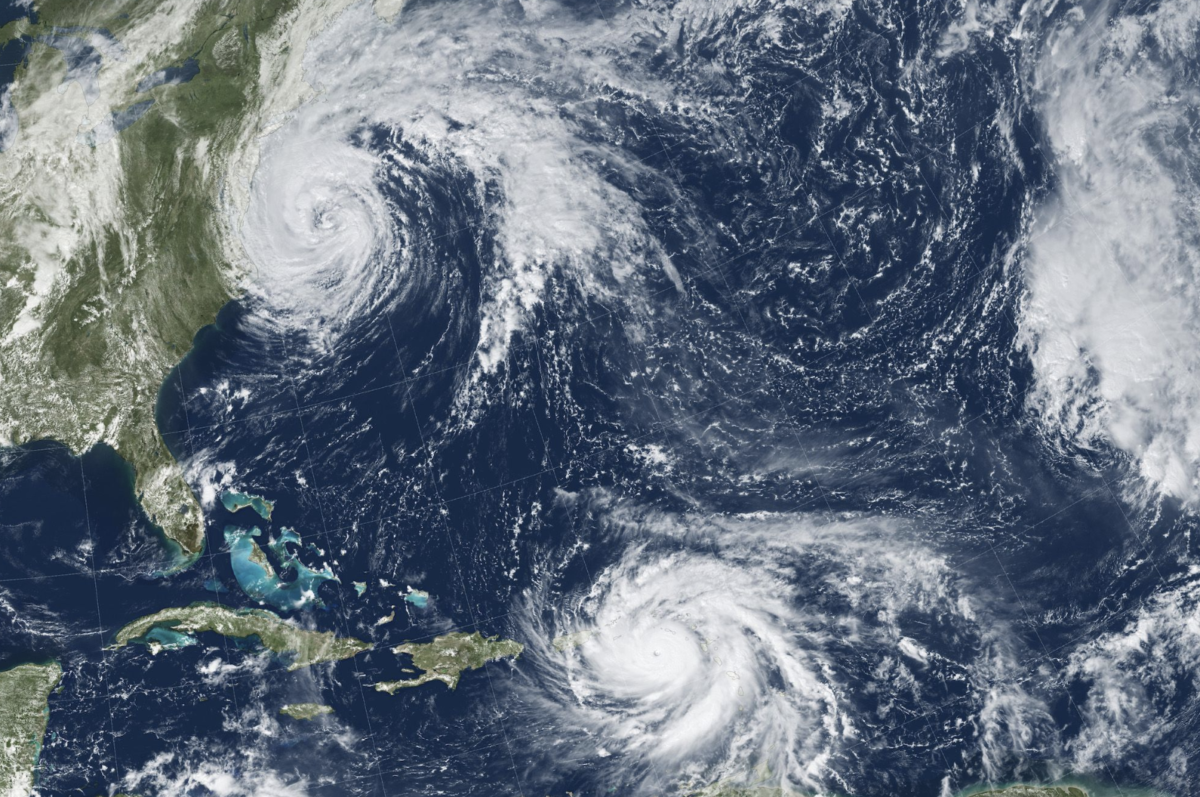The 2020 Atlantic hurricane season broke numerous records and has provided 25 storms, of which 24 are named. 2020 is the second year ever to name storms after letters of the Greek alphabet, which only happens if the allocated number of names for 2020 storms is depleted. This is why, after Tropical Storm Wilfred ended on September 13th, the September 15th storm, Subtropical Storm Alpha, began with the first letter of the Greek alphabet instead of a traditional name like Maria or James. The season began in June and its endless barrage won’t officially end until November 30. Why was 2020 so much more significant and life-threatening than previous years?
The 2020 Atlantic hurricane season is one of several ongoing tropical cyclone seasons around the world. A tropical cyclone is referred to as a hurricane, typhoon, tropical storm, tropical depression, or cyclone, depending on its location and strength. These storms are characterized by closed low-level atmospheric circulation, powerful gusts of wind, and a low-pressure center. They are often accompanied by heavy bouts of rain. Historically, the Atlantic hurricane season peaks in August, September, and early October, which explains the consistent media coverage of a new storm every week or so as summer wanes and fall waxes.
Anthropogenic climate change is the greatest explanation for why the 2020 Atlantic hurricane season has been especially vicious. Behind every Category 4 (dangerous) or 5 (life threatening) tropical cyclone is a growing trend of these types of hurricanes becoming more and more familiar each year. In 2017, the Atlantic hurricane season was one of the first to break several records: 17 tropical storms formed, and 10 became hurricanes. Hurricanes Irma and Maria both reached Category 5 strength and devastated the United States territories of the U.S. Virgin Islands and Puerto Rico. Both territories, three years later, are still left reeling from the indelible damages to island infrastructure and catastrophic death tolls, extending into the thousands for Maria.
Observed Atlantic hurricane activity, measured through multi-year graphs via local tropical Atlantic sea surface temperatures (SSTs) and the Power Dissipation Index (PDI), yields a confident correlation between greater rates of powerful tropical cyclones and global warming and rising sea levels. The PDI acts as a sum measure of recorded Atlantic hurricane activity by adding together the frequency, intensity, and duration of hurricanes across a single index. Combined with SSTs, the PDI has been a historical tool for measuring how hurricane seasons have become increasingly more active and powerful since the 1970s compared to previous hurricane seasons in the 1960s and 50s.
So how do hurricanes today rapidly leap from a simple tropical storm with heavy rain and low-probability of damage to Category 5 monstrosities that sweep down upon land with all the grace and force of a bull in a china shop? As greenhouse gas emissions rise in the atmosphere, so do tropical Atlantic SSTs. This linkage shows a strong probability that anthropogenic climate change influences how Atlantic hurricanes form so quickly and massively. If Atlantic sea surface temperatures continue to rise, as would be expected if current greenhouse gas emissions trends continue, then by 2100, the destructive potential of hurricanes will grow by a disheartening 300 percent increase in the Power Dissipation Index.
Even more telling is that the 10 costliest hurricanes in the United States have all occurred within the past 25 years, with 3 from the 2017 Atlantic hurricane season—Maria, Irma, and Harvey—taking second, third, and fourth place. The estimated losses from these 3 disasters all incurred fortunes of well over $20 billion. Hurricane Katrina, a black stain and one of the greatest natural disasters and hurricanes to have touched land in the United States, retains the first spot. Unfortunately, the very same states that Katrina devastated were also hit by multiple hurricanes in 2020.
On September 12, 2020, Hurricane Sally mowed through the southernmost tip of Florida, and touched down as a Category 2 hurricane in southern Alabama on September 16. Sally would eventually downgrade into a tropical depression as it blew into Georgia, but damages had already happened. Storm surges, catastrophic rain deluges, and property losses dotted the three states in a scene reminiscent of a never ending pile-up accident. Losses were estimated at $1 to $3 billion. And Sally was hardly the beginning brush of the Atlantic season. Earlier, on August 21, Tropical Storm Laura became the first major hurricane of 2020. At Category 4, Laura made landfall on August 27 in Cameron, Louisiana, close to the Texas-Louisiana border. Damages and losses to infrastructure, property, and lives were estimated at $88.6 billion.
For those living in the regions demolished by Hurricane Katrina in 2005, the same reckoning less than two decades later seemed unlikely, even unbelievable. And yet the rucked up tree roots, cracked roads, and flattened homes tell the same story of 15 years ago: if anthropogenic climate change is left unchecked, hurricanes in the Atlantic basin will only grow exponentially stronger, more encompassing, and far-reaching.
The 2020 Atlantic hurricane season is unprecedented. It has smashed records of storm speed, rapid storm development, and has incurred monetary losses in the billions. Anthropogenic climate change has been the boogeyman lurking behind much of the 21st century’s proclivity for intense and immense natural disasters. And while there’s plenty of potential to curb the frequency and severity of future hurricanes, as the Atlantic remains locked in the grips of peak hurricane season, change might already be too late.
Sources
Dolce, C. (2020, July 22). Why August Marks the Beginning of What Is Typically the Busiest Part of Hurricane Season. https://weather.com/storms/hurricane/news/2020-07-22-atlantic-hurricane-season-peak-august-september.
Dolce, C. (2020, September 22). All the Records the 2020 Hurricane Season Has Broken So Far. The Weather Channel. https://weather.com/storms/hurricane/news/2020-09-21-atlantic-hurricane-season-2020-records.
Facts + Statistics: Hurricanes. III. (2020, October 1). https://www.iii.org/fact-statistic/facts-statistics-hurricanes.
Global Warming and Hurricanes. GFDL. (2020, September 23). https://www.gfdl.noaa.gov/global-warming-and-hurricanes/.
Tropical Cyclone Climatology. National Oceanic and Atmospheric Administration. Tropical Cyclone Climatology. (2020). https://www.nhc.noaa.gov/climo/.

